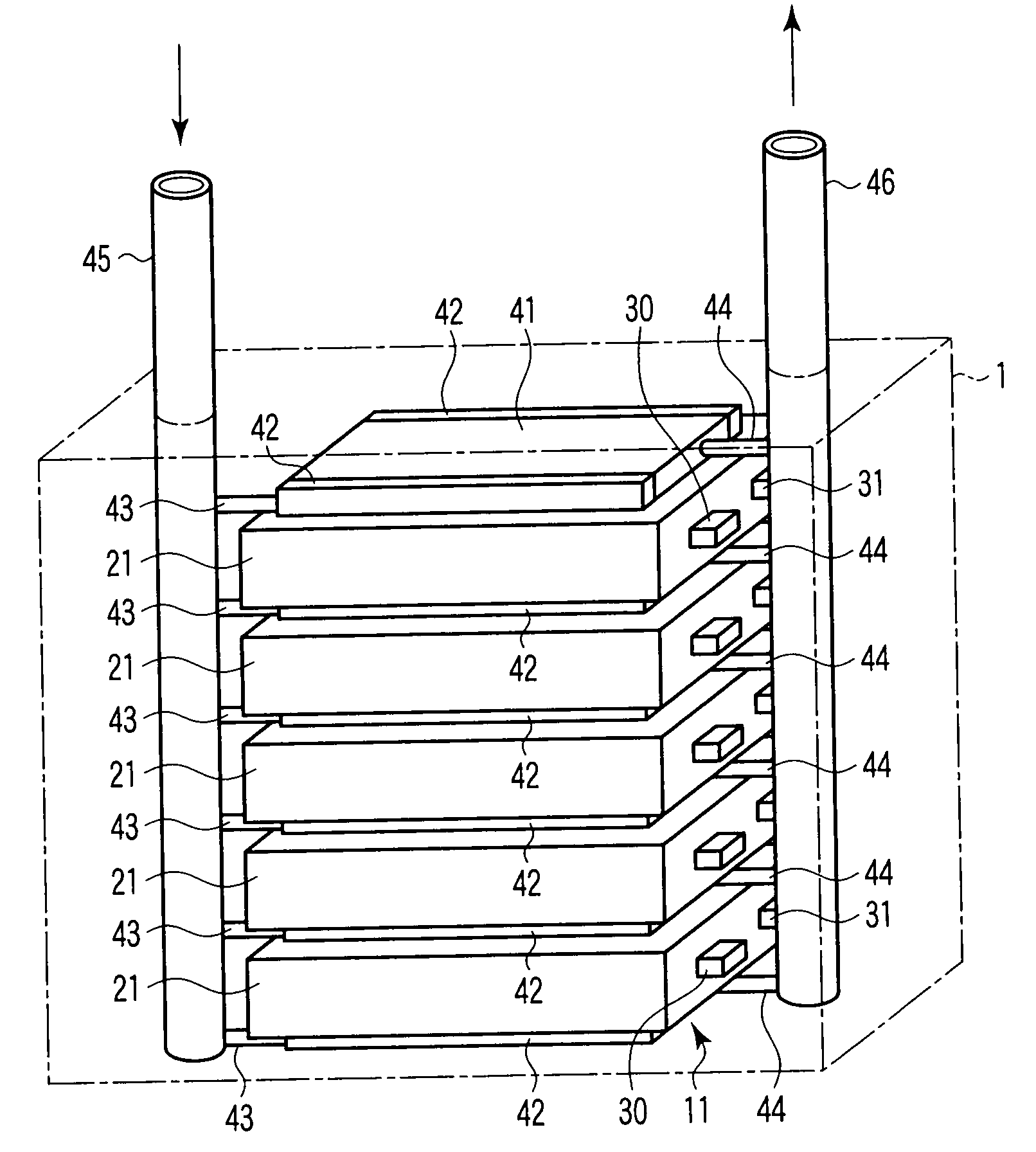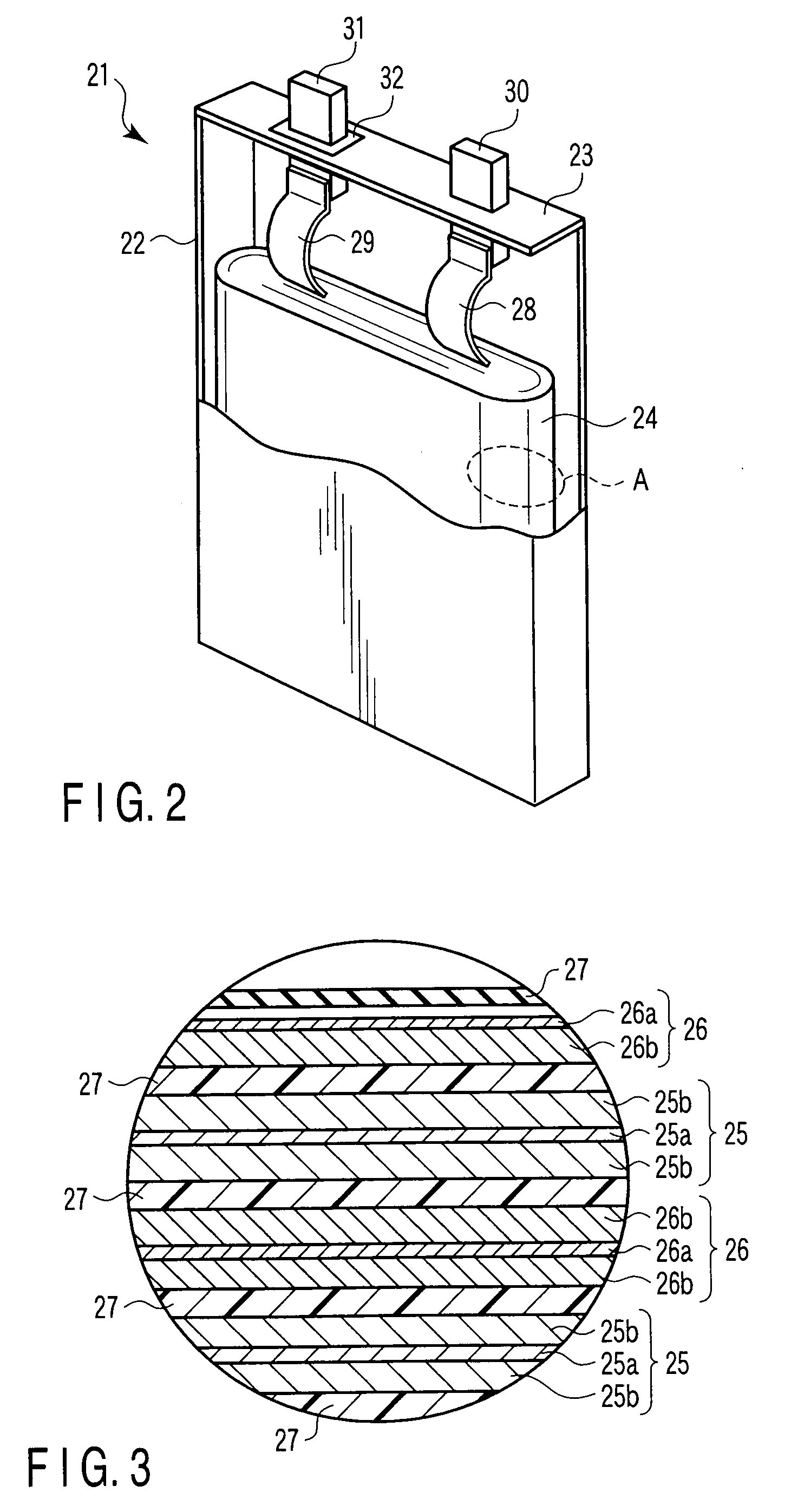Further, concomitant with increasing demands for a higher output power source, there is also an urgent problem with regard to the technological development of a combination battery wherein a large number of secondary batteries (or cells) are laminated with each other.
However, the combination battery which is constituted by a lamination of a large number of flat and rectangular type secondary batteries is more or less accompanied with problems in terms of temperature
equalization of all secondary batteries and heat dissipation thereof.
In the case of the combination battery where the flat and rectangular type secondary batteries are laminated as described above, the cooling and temperature
equalization of each secondary battery are now becoming important issues in improving the life of battery or retaining the capacity of battery.
More specifically, in the case of the combination battery comprising a plurality of columnar secondary batteries, a gap is inevitably produced between adjacent batteries.
Therefore, even if a
thermal transfer medium is introduced into such a combination battery, thermal non-uniformity is liable to occur within the combination battery.
However, in the case of this technique, since the gap between the batteries is utilized as a flow channel, a
differential pressure is produced in the combination battery depending on the positional relationship between the arrangement of the batteries and the position of the cooling fan, thereby more likely producing a non-uniform flow distribution within the combination battery.
However, the use of water as a
cooling medium for cooling a large scale non-aqueous
solvent type secondary battery is not preferable.
Especially, in the case of a
lithium ion secondary battery containing a substance which is prohibited the use of water, there are much possibilities of causing overheating / ignition of battery by the reaction of the substance with water.
Additionally, there is a problem which is peculiar to the
lithium ion battery that since the reactivity of
lithium used as an active material is high in reactivity and an organic
electrolyte is used, there is great likelihood of causing a
short circuit and abnormal heat build-up in the battery.
Furthermore, in the case of the battery where a large
electric power is required as in the case of
hybrid cars and
electric motor cars, since a large current is required to be delivered by the battery, the battery temperature may be caused to rise instantaneously if a
short circuit occurs in the battery.
In the case of a large scale combination battery where a plurality of the aforementioned secondary batteries are laminated, the employment of air containing
oxygen or the employment of water which is highly reactive with lithium as a
cooling medium may raise a problem in viewpoint of safety as described above.
However, this technique is accompanied with a problem that unless the abnormal heat build-up of secondary batteries constituting the combination battery is transmitted to the outer circumferential surface of the outer case, the safety mechanism thereof would not be actuated.
For example, when the abnormal heat build-up occurs in a secondary battery which is disposed at a central portion of the combination battery, a fairly long time would be required for this abnormal heat build-up to reach the outer circumferential surface of the outer case.
In the case of the combination battery constituted by a lamination of a large number of secondary batteries each having a
large capacity, when abnormal heat build-up occurs in one of the secondary batteries for some reason, other normal secondary batteries adjacent to the heated secondary battery may be also heated, possibly resulting in induced over-heating / ignition of a battery.
 Login to View More
Login to View More  Login to View More
Login to View More 


